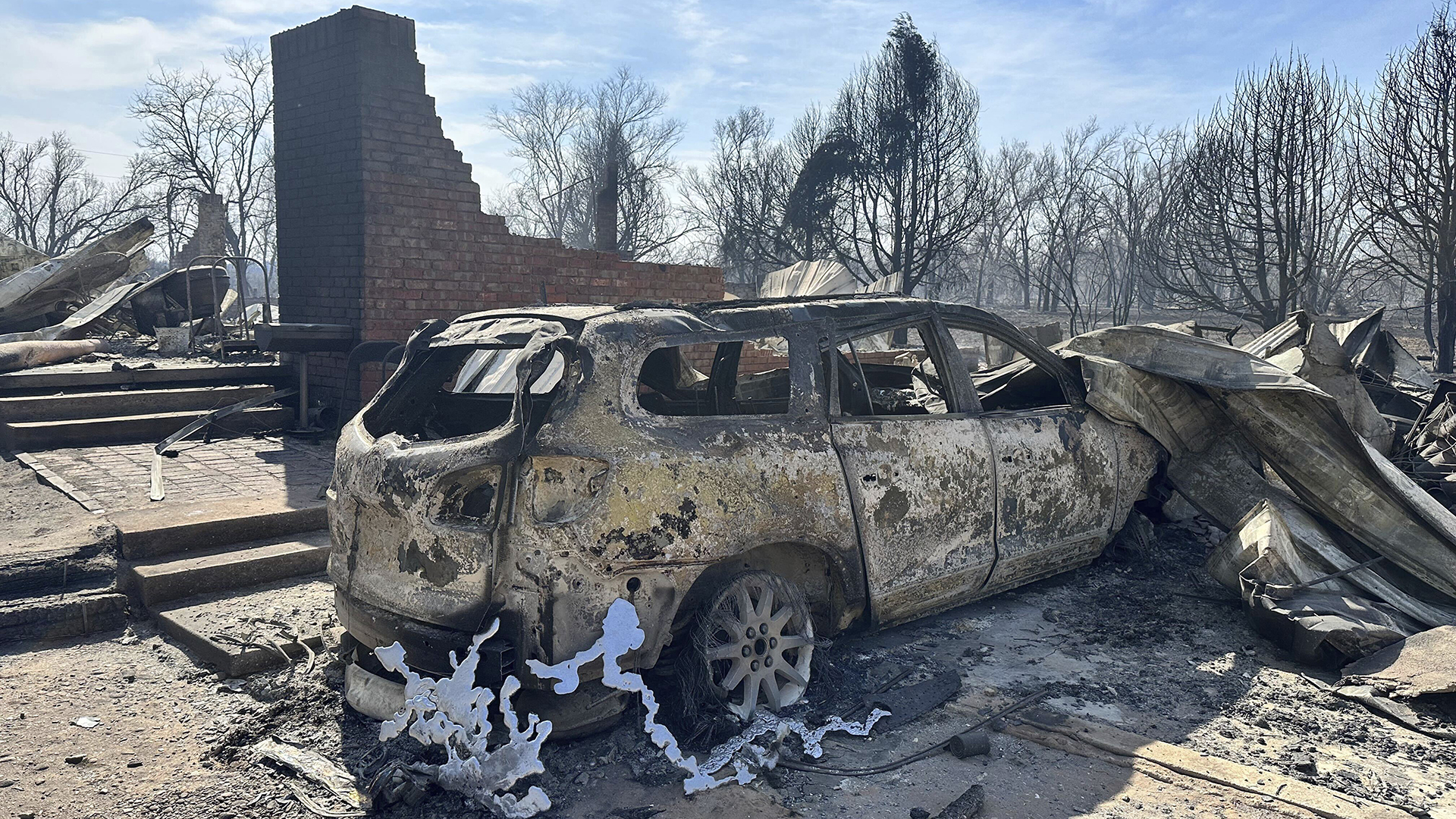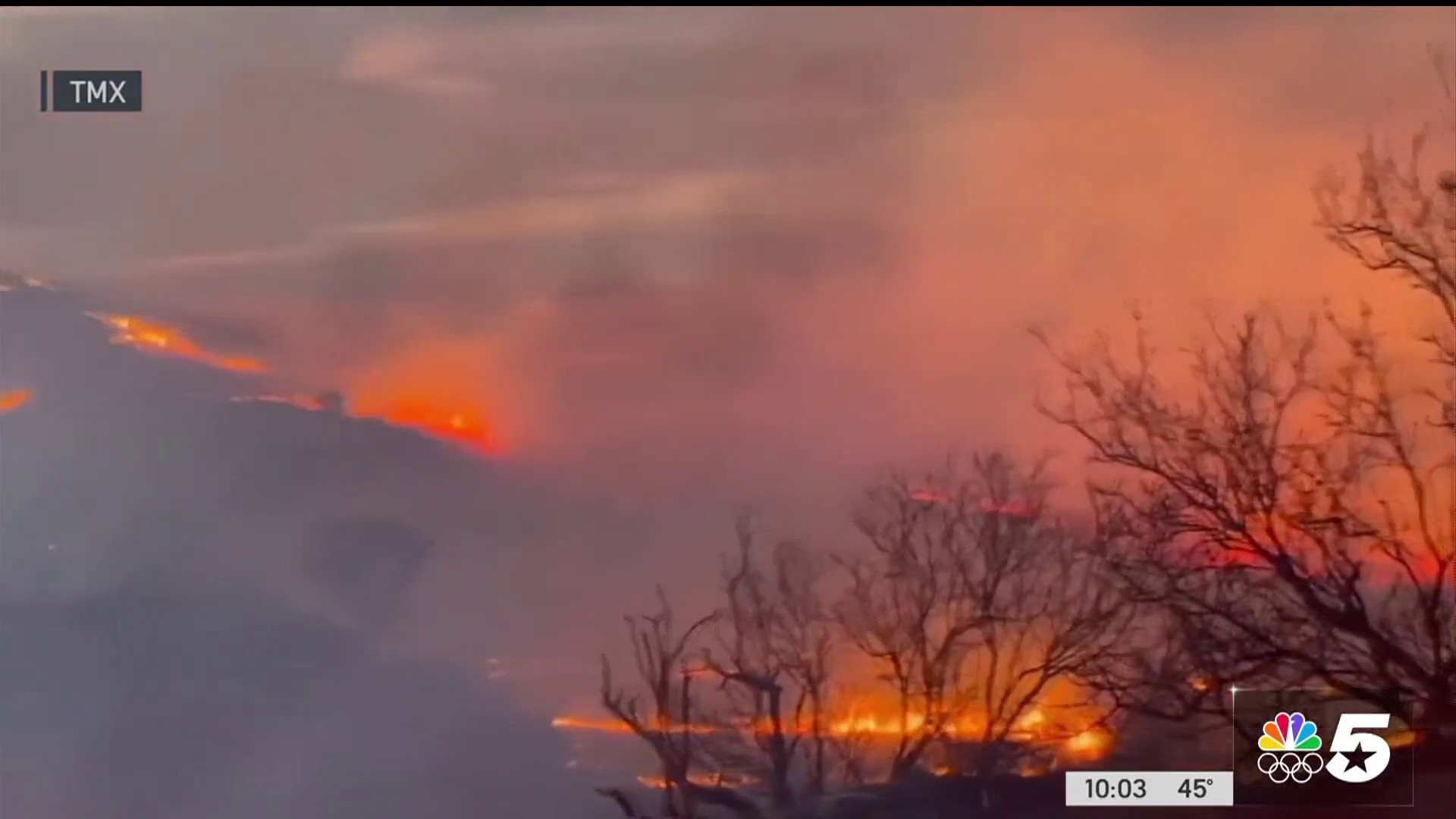What to know about Texas wildfires
- The Smokehouse Creek fire ignited in the Panhandle on Monday in rough terrain and unfavorable weather conditions and spread with alarming speed.
- The wildfire is the largest in the state's history and is estimated to have scorched nearly 1.1 million acres, destroyed an estimated 500 structures and to have killed two people.
- Wondering how you can help the victims of the Texas Panhandle wildfires? Click here to help.
Wildfires may have destroyed as many as 500 structures in the Texas Panhandle and that number could rise as damage assessments continue, Republican Gov. Greg Abbott said Friday.
The Smokehouse Creek fire, the largest blaze in state history that began Monday, has burned about 1,700 square miles in Texas and killed two people. It has left behind a charred landscape of scorched prairie, dead cattle and burned-out homes in the Texas Panhandle.
Get top local stories in DFW delivered to you every morning. Sign up for NBC DFW's News Headlines newsletter.
“When you look at the damages that have occurred here it’s just gone, completely gone nothing left but ashes on the ground,” Abbott said at a news conference in Borger, Texas.
The National Weather Service forecast for the weekend warns of strong winds, relatively low humidity and dry conditions that pose a “significant threat” to the spread of wildfires in parts of Texas, Oklahoma, Kansas and New Mexico.
In the hard-hit town of Stinnett, population roughly 1,600, families who evacuated from the Smokehouse Creek fire returned Thursday to devastating scenes: melted street signs and charred frames of cars and trucks. Homes were reduced to piles of ash and rubble. An American flag propped up outside a destroyed house.
“We had to watch from a few miles away as our neighborhood burned,” Danny Phillips said, his voice trembling with emotion.
Phillips’ one-story home was still standing, but several of his neighbors weren't so fortunate.
Stinnett's destruction was a reminder that, even as snow fell Thursday and helped firefighters, crews are racing to stamp out the blaze ahead of higher temperatures and winds forecast in the coming days.
Already, the Smokehouse Creek fire has killed two people and left behind a desolate landscape of scorched prairie, dead cattle and burned-out homes in the rural Texas Panhandle. The largest of several major fires burning in the area, it has also crossed into Oklahoma.
The Smokehouse Creek blaze merged with another fire and is 5% contained, up from 3% on Thursday, the Texas A&M Forest Service said Friday.
At the X-Cross-X Ranch near Skellytown, ranch hands scooped up the bloated carcasses of dead cattle using bulldozers and deposited them on a pile beside a dirt road. They were then loaded into the back of an open trailer.
TEXAS PANHANDLE WILDFIRES
Ranch operator Chance Bowers said he expects to lose about a quarter of the 1,000 cows on three ranches, either to burns or smoke inhalation. He said they were in the middle of the calving season and “we’re not finding many calves, so that’s going to be pretty detrimental.”
“As you can see behind us, we’re picking up deads today,” Bowers said. “We don’t have a total number, but by the time it’s all said and done, we’re going to have lost between 200 to 250 head, and that’s just cows.”
Texas Agriculture Commissioner Sid Miller estimated the cattle deaths would be in the thousands, with more likely to come.
“There’ll be cattle that we’ll have to euthanize,” Miller said. “They’ll have burned hooves, burned udders.”
Miller said individual ranchers could suffer devastating losses. However, he predicted the overall impact on the Texas cattle industry and on consumer prices for beef would be minimal.
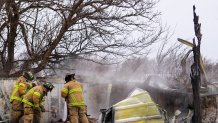
Authorities have not said what ignited the fires, but strong winds, dry grass and unseasonably warm weather fed them.
Firefighting crews were focused on the northern side of the fire, according to Texas A&M Forest Service spokesperson Juan Rodriguez.
“It’s all in anticipation of the weather … we’re expected to receive this weekend, we’re trying to take advantage of the good weather right now” that included rain and snow on Thursday, Rodriguez said.
Conditions will worsen through the weekend in parts of Texas, Oklahoma, Kansas and New Mexico, according to the National Weather Service. Strong winds, relatively low humidity and dry conditions are creating conditions that the weather service warned caused “a significant threat for the rapid spread of wildfires.”
Gray skies loomed over huge scars of blackened earth in a rural area dotted with scrub brush, ranchland, rocky canyons and oil rigs. Firefighter Lee Jones was helping douse the smoldering wreckage of homes in Stinnett to keep them from reigniting when the weather starts turning Friday and continues into the weekend.
“We’re just hitting all the hot spots around town, the houses that have already burned,” Jones said.
Two women have been confirmed killed by the fires this week. But with flames still menacing a wide area, authorities haven't yet thoroughly searched for victims or tallied homes and other structures damaged or destroyed.
Cindy Owen was driving in Texas' Hemphill County south of Canadian on Tuesday afternoon when she encountered fire or smoke, said Sgt. Chris Ray of the state's Department of Public Safety. She got out of her truck, and flames overtook her.
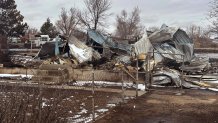
A passerby found Owen and called first responders, who took her to a burn unit in Oklahoma. She died Thursday morning, Ray said.
The other victim, an 83-year-old woman, was identified by family members as Joyce Blankenship, a former substitute teacher. Her grandson, Lee Quesada, said deputies told his uncle Wednesday that they had found Blankenship’s remains in her burned home.
President Joe Biden, who was in Texas on Thursday to visit the U.S.-Mexico border, said he directed federal officials to do “everything possible” to assist fire-affected communities, including sending firefighters and equipment. The Federal Emergency Management Agency has guaranteed Texas and Oklahoma will be reimbursed for their emergency costs, the president said.
“When disasters strike, there’s no red states or blue states where I come from,” Biden said. “Just communities and families looking for help.”
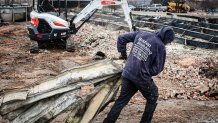
Abbott issued a disaster declaration for 60 counties.
The weekend forecast and “sheer size and scope” of the blaze are the biggest challenges for firefighters, said Nim Kidd, chief of the Texas Division of Emergency Management.
“I don’t want the community there to feel a false sense of security that all these fires will not grow anymore,” Kidd said. “This is still a very dynamic situation.”
Jeremiah Kaslon, a Stinnett resident who saw neighbors’ homes destroyed by flames that stopped just on the edge of his property, seemed prepared for what the changing forecast might bring.
“Around here, the weather, we get all four seasons in a week,” Kaslon said. “It can be hot, hot and windy, and it will be snowing the next day. It’s just that time of year.”
Encroaching flames caused the main facility that disassembles America’s nuclear arsenal to pause operations Tuesday night, but it was open for normal work by Wednesday. The small town of Fritch, which lost hundreds of homes in a 2014 fire, saw 40 to 50 more destroyed this week, Mayor Tom Ray said.
TEXAS WILDFIRE MAPS
TEXAS WILDFIRES
2011 TEXAS WILDFIRES
In April 2011, during an extreme drought, four out-of-control wildfires burning in close proximity to each other were dubbed The Possum Kingdom Complex Fire. The fires scorched 126,000 acres of parched Texas ranch land and destroyed 168 homes and two churches.
Senior Meteorologist David Finfrock said in the NBC 5 docu-series Inside the Storm: Texas Burning, that at that time the period from August 2010 to July 2011 was the driest 12 consecutive months on record.
Later that summer, in August, a second fire erupted near the lake called the PK 101 Ranch fire. That fire burned more than 6,000 additional acres on the south side of the lake and destroyed nearly 40 more homes.
On Sept. 4, 2011, a massive wildfire erupted in Central Texas. The Bastrop County Complex Fire, east of Austin, became the most destructive wildfire in Texas history. More than 1,600 homes and structures were destroyed when 32,000 acres were scorched, including 96% of the 6,565-acre Bastrop State Park. Two people died in the fires.
During that 2011 fire season, the Texas A&M Forest Service said more than 31,000 fires burned more than four million acres across the state and destroyed 2,947 homes.
Sign up for our Breaking Newsletter to get the most urgent news stories in your inbox.

